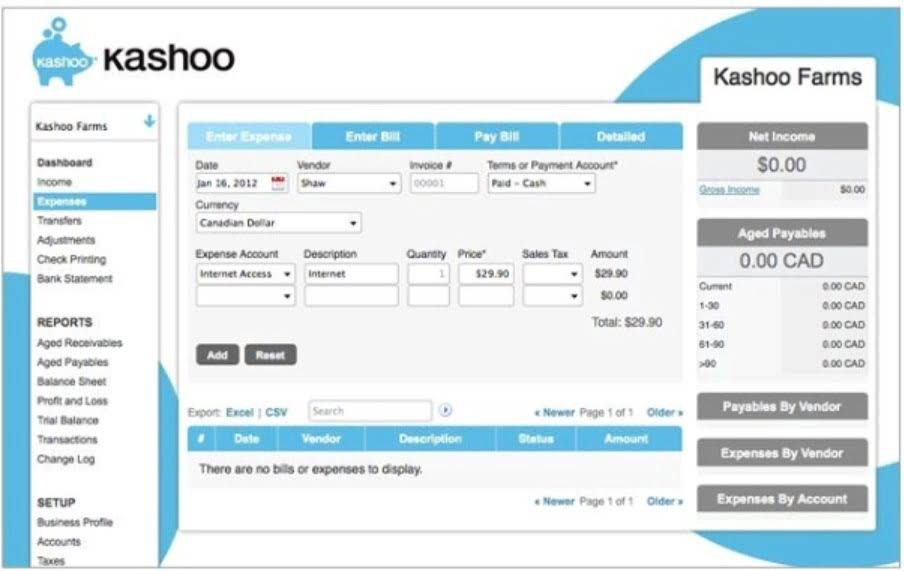Content

The assertion is that recorded business transactions actually took place. The assertion is that all business events to which the company was subjected were recorded.

The training activity and mini case may also be useful in graduate level and advanced auditing courses as a review or warm-up assignment. Perform the following for each item on the list of 25 substantive audit tasks in the PAL training activity presented in Exhibit 3.
Evidence of Effectiveness
Bank deposits may also be examined for existence by looking at corresponding bank statements and bank reconciliations. Auditors may also directly contact the bank to request current bank balances. Reperformance involves the independent execution of procedures or controls that were originally performed by company personnel. Recalculation consists of checking the mathematical accuracy of documents or records.

It’s critically important for all transactions in a given accounting period to be recorded properly. When confirming completeness, auditors verify that this is the case. The goal for companies making such assertions is to minimize the risk of material misstatement by failing to provide financial data that is, in fact, complete and accurate. Organizations of all sizes and types, from megacorporations to small businesses to nonprofits, prepare financial statements they are obliged to prepare and present as transparently and accurately as possible when audited. Public companies, for example, are required by law to have an annual audit of their financial statements. When management prepares financial statements, it makes certain assertions that an investor has to assume to be true for the financial statements to be useful.
Why Is Management Responsible For Financial Statements?
These tasks also relate to various business processes and are presented in random order so the auditors will think carefully about their responses. Financial statement assertions are statements or claims that companies make about the fundamental accuracy of the information in their financial statements.
Assets, liability, equity revenue, and expense components have been included in the financial statements at appropriate amounts. The next step is to ensure the asset or liability belongs to the business. Using the relevant paperwork obtained during the test for existence, the auditor will check to ensure that all assets are the legal property of the business or that the business owes the money from the liability. The auditor will also check to ensure that an appropriate agent of the business approved the transaction and that the proper process was followed. The first assertion an auditor will review is to check to make sure the asset or liability exists.
Why is it important to know the different types of assertions?
Importance of Assertions
Assertions are an important aspect of auditing. Since financial statements cannot be held to a lie detector test to determine whether they are factual or not, other methods must be used to establish the truth of the financial statements.
After identifying the significant account and relevant assertion for the list of tasks, auditors gather evidence that supports and corroborates or contradicts management assertions . Auditors select the type of audit procedures capable of providing sufficient appropriate evidence that is both relevant and reliable, as required by auditing standards (AICPA 2012b; PCAOB 2010c). Sufficient refers to the amount of evidence, while appropriate refers to the ability of the evidence to support the related assertion. Much like the presentation of management assertions, the PCAOB and AICPA each provide guidance on audit evidence that includes lists and definitions of the various types of audit procedures, as provided in Exhibit 2, Panels A and B, respectively.
Publicly held companies are required to have an audit of their financial statements annually. Inventory can also play a large role in the completeness assertion, with auditors looking at inventory transactions that took place during a specific period by examining inventory levels and corresponding sales numbers to determine that inventory was recorded properly. Financial accounting assertions are a very important part of auditing. That’s because there is no other way to hold the preparers of financial statements accountable.
How Internal Auditors and Board Members beat Recession
The term classes of transactions refers to the fact that the company’s various transactions are divided into categories in its financial statements; like transactions are grouped together. Only material misstatements can be used to support an assertion about whether a financial statement is free from material misrepresentation or omission so auditors must determine which transactions contain these types of problems in order to issue their opinion on each assertion. An audit is a review of an entity’s financial statements and other information to assess its compliance with laws, regulations, contracts, and grant agreements. The auditor gathers evidence about the assertions made by management in order to form conclusions about whether those assertions are reasonable.
- Payroll and inventory balances are often checked for cut-off accuracy to determine that the activity that took place was recorded in the appropriate period.
- The assertion of completeness also states that a company’s entire inventory is included in the total inventory figure appearing on a financial statement.
- To verify that the amount recorded as paid is the same as received from the customer.
- Identify the significant account implied or referenced in each task, calling upon your knowledge of financial statement accounts or referring to a chart of accounts or financial statements from your accounting textbooks as a source of accounts to consider.
- For example, the company receives a bill from the telephone company and posts it to accounts payable — that’s a transaction.
- Disclosed events and transactions have occurred and pertain to the entity.
For example, the level of evidence required for testing cash would be different than that required for verifying accounts receivable since cash is a current asset and account receivables are non-current assets. For each assertion, the auditor must consider which classes of transactions apply and then determine how much evidence to gather in order to support that particular assertion.
In conclusion on financial statement assertions
MVT is eager to convince stakeholders that the acquisition was a smart business move. Transaction level assertions are applicable on the income statement.
These tests are specific to the accounts and information systems in place at the company being audited. Audit tests developed for an audit client are documented in an audit program. The concept is primarily used concerning auditing a company’s financial statements, where the auditors rely upon various assertions regarding the business.
Chapter 6: Management Assertions
Transaction level assertions are made in relation to classes of transactions, such as revenues, expenses, dividend payments, etc. The auditor may decide to examine items whose recorded values exceed a certain amount to verify a large proportion of the total amount of the items included in an account. Presentation and disclosure – The components of the financial statements management assertions are properly classified, described, and disclosed. Rights and obligations – The company holds or controls rights to the assets, and liabilities are obligations of the company at a given date. The auditor is not expected to be an expert in document authentication. The entity holds or controls the rights to assets, and liabilities are the entity’s obligations.
MVT is feeling pressure to cap the growth in selling, general, and administrative expenses, despite the need to maintain or increase marketing and promotion efforts. Among the expenses that have grown recently is warranty expense, as the company offers an enhanced warranty to attract new customers without lowering the unit prices of its products. MVT is a midsize publicly traded industrial company that has been in operation for over ten years. This is the first year that North Central CPAs has been engaged to audit MVT. Communication with the predecessor auditor revealed that the MVT audit engagement was discontinued by the predecessor firm as part of its effort to reorganize its client portfolio to meet an objective of more concentrated specialization in other industries. MVT manufactures commercial vacuum systems capable of absorbing large quantities of both loose materials and liquids, providing containment of hazardous substances during the vacuuming process.
- Existence – assets, liabilities, and equity balances are there.Transaction and disclosure.
- However, knowing what these assertions are and what an auditor will be looking for during the audit process can go a long way toward being better prepared for one.
- The cut-off assertion is used to determine whether the transactions recorded have been recorded in the appropriate accounting period.
- A good way to catch problems with the cutoff assertion is to use the subsequent payment test.
- For example, a person who stands up in a meeting with a point in opposition to the presenter, despite having valid evidence to back up their claim.
- There are numerous audit assertion categories that auditors use to support and verify the information found in a company’s financial statements.
Sales revenue accounts are often misstated due to management’s incentive to overstate the amount of sales revenue reported in the income statement to achieve individual or company objectives. Management is responsible for the preparation of financial statements and makes assertions about financial elements through the statements regarding the recognition, measurement, presentation, and disclosure of financial information . Management assertions are central to financial statement auditing because they are the focus of an auditor’s responsibility for evidence collection . Audit guidance from both the American Institute of Certified Public Accountants and the Public Company Accounting Oversight Board stresses the importance of planning the financial statement audit at the assertion level (AICPA 2012a; PCAOB 2010c). Summaries of PCAOB inspection reports indicate that regulators demand improved documentation of testing and evidence gathering sufficient to support an audit opinion. This improved documentation includes identification of the relevant assertions addressed by the audit procedures . AICPA peer review summaries also show a need for improved documentation of audit testing that clearly indicates the significant accounts and related assertions being tested.
How many types of assertions are there in auditing?
Further, some assertions are applicable on the balance sheet and some on the income statement. Valuation of the balance sheet items must be correct as overvalued or undervalued accounts will result in a false representation of the financial facts. This type of assertion is related to the proper valuation of the assets, the liabilities, and the equity balances. You must perform the valuation properly to reflect an accurate and fair position of the company’s financial position.
Evidence obtained from a knowledgeable source that is independent of the company is more reliable than evidence obtained only from internal company sources. Cash Flow From Operating Activities indicates the amount of cash a company generates from its ongoing, regular business activities.
What is a negative assertion?
negative assertion means statements where there deny, say no in certain matters.
Substantive testing consists of tests of details of transactions, tests of details of account balances and disclosures, and analytical procedures (AICPA 2012b; PCAOB 2010c). The list of audit tasks in the PAL training activity includes various examples from each of these three types of substantive procedures. North Central CPAs defines substantive audit tasks as an abbreviated form of a substantive test; the tasks are abbreviated because they describe the nature of the test but do not provide details about the timing of the procedure or the extent of testing applied. At ESG | The Report, we believe that we can help make the world a more sustainable place through the power of education. As with any investment, we highly recommend that you get a financial advisor or investment adviser, do your homework in advance of making any moves in the stock market. Thank you for reading, and we hope that you found this article useful in your quest to understand ESG and sustainable business practices. We look forward to living together in a sustainable world with you.
Audit Procedures and Objectives
Financial statement assertions are a company’s official statement that the figures the company is reporting are accurate. All transactions and events that have been recorded have occurred and pertain to the entity. Classification — financial statements are clear and appropriately presented. The assertion is that all reported asset, liability, and equity balances have been fully reported. The company can charge depreciation only in respect of assets owned by the entity.
- This is the assertion that all appropriate information and disclosures are included in a company’s statements and all the information presented in the statements is fair and easy to understand.
- The same process is used when verifying accounts receivable balances.
- Evidence also refers to the tests that are performed to gather information about a particular class of transactions.
- Transactions and events have been recorded in the correct accounting period.
One of the ways to test this assertion is to redo all the calculations. Assertions are made to attest to the authenticity of information on balance sheets, income statements, and cash flow statements. Accounts balances as of period endExistence — assets, liabilities and equity balances exist. Cutoff — the transactions have been recorded in the correct accounting period. The assertion is that all transactions were recorded within the correct reporting period.
Thus, the truth & fairness of the financial statements is justified with help of audit assertions. The occurrence of a transaction or event.Assets, liabilities, and equity balances as of the end of the period. Existence – assets, liabilities, and equity balances are there.Transaction and disclosure. Materiality can vary from transaction to transaction which means that the auditor will have to determine whether a misstatement is material or immaterial for each class of transactions. For example, if inventory was understated by $100 but only represented 0.01% of total assets then it would likely be seen as an immaterial error whereas $100 out of $1000 in cash could be considered material because it represents half of one percent.
Management Assertions: Classes of Transactions
The following page contains the https://www.bookstime.com/ from the University of Nebraska-Lincoln Identity Management Steering Committee regarding the InCommon Assurance Profiles, version 1.2. For these, the auditor needs to verify the backup documents which claims such investments have been made by the company. Also, auditor may ask for third-party verification of balance as on the said date. The relationship between business objectives and business assertions (12-4) is discussed in the following paragraphs. In contrast to business objectives, assertations are after-the-fact statements of what has been achieved by the auditee.

In developing that conclusion, the auditor evaluates whether audit evidence corroborates or contradicts financial statement assertions. Second, auditors are required to consider the risk of material misstatement through understanding the entity and its environment, including the entity’s internal control. Financial statement assertions provide a framework to assess the risk of material misstatement in each significant account balance or class of transactions. Significant accounts are those accounts within the financial statements that are most at risk of material misstatement, and the risk of material misstatement provides context for the most likely type of management assertion to be tested during the audit. Auditors consider the most likely cause of a potential misstatement when developing their audit approach for significant accounts. For accounts at risk of overstatement, the existence assertion is emphasized, while accounts at risk of understatement highlight the need to test the completeness assertion.
What Is The Purpose Of Management Assertions?
This allows us to provide you with an unparalleled level of insight into companies’ performance against these criteria. We believe in helping companies understand what investors are looking for in responsible businesses and help investors understand how companies are performing against ESG criteria. Based on the facts of the case, identify at least ten inherent risk factors that should be considered during the planning phase of the MVT audit. You may wish to analyze and organize your responses according to the five categories of inherent risk factors suggested by the PCAOB and listed on page 10. Identify the relevant management assertion for the significant account you identified. These classes can be revenue, expenses, and accounts that involve payments like a dividend. Explain why separation of duties is often described as the cornerstone of internal control for safeguarding assets.
The assertion is that all transactions that should be disclosed have been disclosed. The assertion is that all information disclosed is in the correct amounts, and which reflect their proper values. Management has some measurement basis to arrive at the value of $ 250 million (i.e. valuation assertion). Receipt of cash from the customer in payment for the goods or services.

